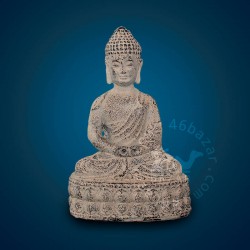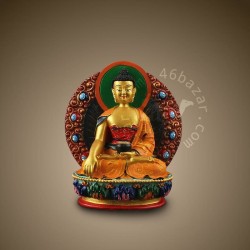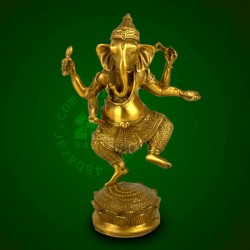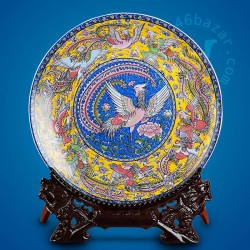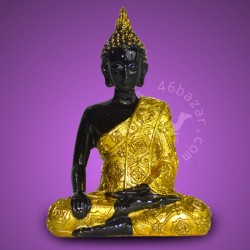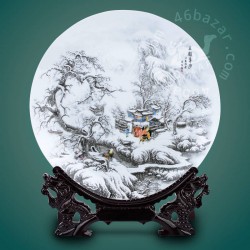List of The Tang Dynasty Rulers
Complete list of Tang Dynasty rulers' name, temple name, era name, reign, born and died year with Pinyin and playable Chinese pronunciation audio. Click here to view full China dynasties list.
| Name | Temple Name | Era Name | Born - Died | Reign |
|---|---|---|---|---|
Li Yuan 李渊 |
Gaozu 高祖 |
Wude 武德 |
566 - 635 |
618 - 626 |
Li Shimin 李世民 |
Taizong 太宗 |
Zhenguan 贞观 |
599 - 649 |
626 - 649 |
Li Zhi 李治 |
Gaozong 高宗 |
Yonghui
永徽 Yǒnghuī Xianqing
显庆 Xiǎnqìng Longshuo
龙朔 Lóngshuò Linde
麟德 Líndé Qianfeng
乾封 Qiánfēng Zongzhang
总章 Zǒngzhāng Xianheng
咸亨 Xiánhēng Shangyuan
上元 Shàngyuán Yifeng
仪凤 Yífèng Tiaolu
调露 Tiáolù Yonglong
永隆 Yǒnglóng Kaiyao
开耀 Kāiyào Yongchun
永淳 Yǒngchún Hongdao
弘道 Hóngdào |
628 - 683 |
649 - 683 |
Li Xian 李显 |
Zhongzong 中宗 |
Sisheng 嗣圣 |
656 - 710 |
684 |
Li Dan 李旦 |
Ruizong 睿宗 |
Wenming
文明 Wénmíng Guangzhai
光宅 Guāngzhái Chuigong
垂拱 Chuígǒng Yongchang
永昌 Yǒngchāng Zaichu
载初 Zǎichū |
662 - 716 |
684 - 690 |
Wu Zhao 武曌 |
- - |
Tianshou
天授 Tiānshòu Ruyi
如意 Rúyì Changshou
长寿 Chángshòu Yanzai
延载 Yánzǎi Zhengsheng
证圣 Zhèngshèng Tiancewansui
天册万岁 Tiāncè Wànsuì Wansuidengfeng
万岁登封 Wànsuì Dēngfēng Wansuitongtian
万岁通天 Wànsuì Tōngtiān Shengong
神功 Shéngōng Shengli
圣历 Shènglì Jiushi
久视 Jiǔshì Dazu
大足 Dàzú Changan
长安 Cháng'ān Shenlong
神龙 Shénlóng |
624 - 705 |
690 - 705 |
Li Xian 李显 |
Zhongzong 中宗 |
Shenlong
神龙 Shénlóng Jinglong
景龙 Jǐnglóng |
656 - 710 |
705 - 710 |
Li Chongmao 李重茂 |
- - |
Tanglong 唐隆 |
695 - 714 |
710 |
Li Dan 李旦 |
Ruizong 睿宗 |
Jingyun
景云 Jǐngyún Taiji
太极 Tàijí Yanhe
延和 Yánhé |
662 - 716 |
710 - 712 |
Li Longji 李隆基 |
Xuanzong 玄宗 |
Xiantian
先天 Xiāntiān Kaiyuan
开元 Kāiyuán Tianbao
天宝 Tiānbǎo |
685 - 762 |
712 - 756 |
Li Heng 李亨 |
Suzong 肃宗 |
Zhide
至德 Zhìdé Qianyuan
乾元 Qiányuán Shangyuan
上元 Shàngyuán Baoying
宝应 Bǎoyīng |
711 - 762 |
756 - 762 |
Li Yu 李豫 |
Daizong 代宗 |
Guangde
广德 Guǎngdé Yongtai
永泰 Yǒngtài Dali
大历 Dàlì |
727 - 779 |
762 - 779 |
Li Kuo 李适 |
Dezong 德宗 |
Jianzhong
建中 Jiànzhōng Xingyuan
兴元 Xīngyuán Zhengyuan
贞元 Zhēngyuán |
742 - 805 |
779 - 805 |
Li Song 李诵 |
Shunzong 顺宗 |
Yongzhen 永贞 |
761 - 806 |
805 |
Li Chun 李纯 |
Xianzong 宪宗 |
Yuanhe 元和 |
778 - 820 |
805 - 820 |
Li Heng 李恒 |
Muzong 穆宗 |
Changqing 长庆 |
795 - 824 |
820 - 824 |
Li Zhan 李湛 |
Jingzong 敬宗 |
Baoli 宝历 |
809 - 826 |
824 - 826 |
Li Ang 李昂 |
Wenzong 文宗 |
Taihe
太和 Tàihé Kaicheng
开成 Kāichéng |
809 - 840 |
826 - 840 |
Li Yan 李炎 |
Wuzong 武宗 |
Huichang 会昌 |
814 - 846 |
840 - 846 |
Li Chen 李忱 |
Xuanzong 宣宗 |
Dazhong 大中 |
810 - 859 |
846 - 859 |
Li Cui 李漼 |
Yizong 懿宗 |
Xiantong 咸通 |
833 - 873 |
859 - 873 |
Li Xuan 李儇 |
Xizong 僖宗 |
Qianfu
乾符 Qíanfú Guangming
广明 Guǎngmíng Zhonghe
中和 Zhōnghé Guangqi
光启 Guāngqǐ Wende
文德 Wéndé |
862 - 888 |
874 - 888 |
Li Ye 李晔 |
Zhaozong 昭宗 |
Longji
龙纪 Lóngjì Dashun
大顺 Dàshùn Jingfu
景福 Jǐngfú Qianning
乾宁 Qíanníng Guanghua
光化 Guānghùa Tianfu
天复 Tiānfù Tianyou
天祐 Tiānyòu |
867 - 904 |
888 - 904 |
Li Chu 李柷 |
- - |
Tianyou 天祐 |
892 - 908 |
904 - 907 |
About Tang Dynasty
The Tang Dynasty was one of the most prosperous and influential periods in Chinese history that ruled from 618 to 907 AD. It was founded by Li Yuan, a general of the Sui dynasty who rebelled against the tyrannical rule of Emperor Yang. The second emperor, Li Shimin, also known as Emperor Taizong, expanded the empire through military campaigns. He also promoted Confucianism as the state ideology and reformed the civil service system.
One of the most remarkable figures of the Tang dynasty was Wu Zhao, also known as Wu Zetian, she was mother of Li Xian and Li Dan, the Tang dynasty 4th and 5th emperor. After Emperor Gaozong Li Zhi's death, she ruled as regent for her aforementioned sons and then proclaimed herself emperor of a new Zhou dynasty in 690 AD. She was the only woman in Chinese history to rule as emperor in her own right.
Another notable emperor of the Tang dynasty was Emperor Xuanzong, Li Longji. The Tang dynasty reached its peak under Emperor Xuanzong in the 8th century. He also had a famous romance with his concubine Yang Guifei, who was blamed for the An Lushan Rebellion that broke out in 755 AD. The rebellion weakened the Tang dynasty and led to its decline in the later years.
The Tang dynasty was a cosmopolitan and prosperous era that fostered trade, cultural exchange and innovation. It produced many famous poets, such as Li Bai, Du Fu and Wang Wei, who are still admired today. It also witnessed the flourishing of Buddhism, Taoism and other religions and philosophies. The Tang dynasty influenced many neighboring countries, such as Korea, Japan and Vietnam, in terms of politics, culture and religion. The Tang dynasty is regarded as one of the greatest dynasties in Chinese history.
More Miscellany
Copyright © 2025 46 Bazar. All Rights Reserved.

